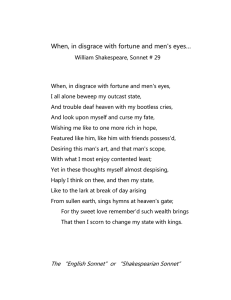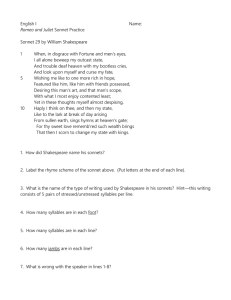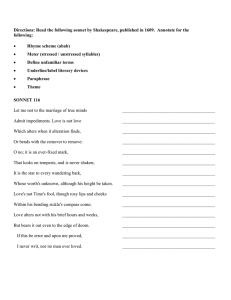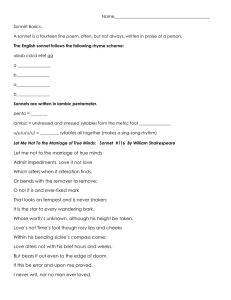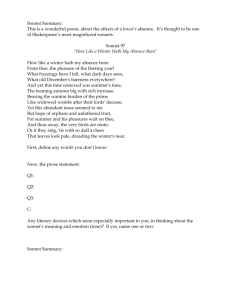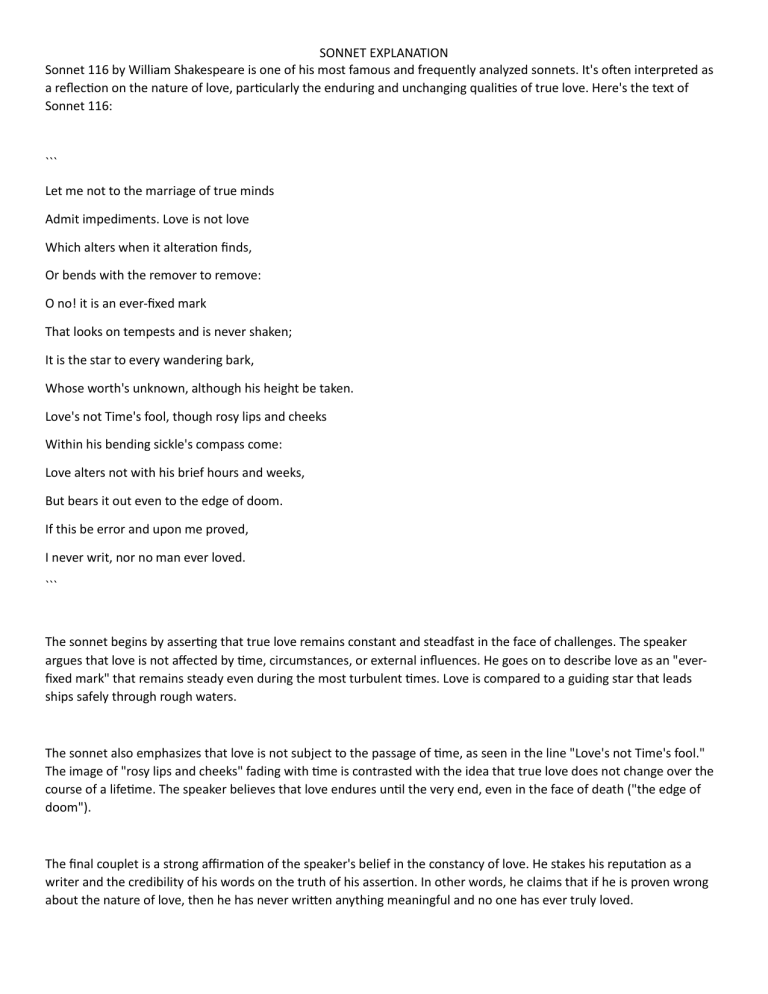
SONNET EXPLANATION Sonnet 116 by William Shakespeare is one of his most famous and frequently analyzed sonnets. It's often interpreted as a reflection on the nature of love, particularly the enduring and unchanging qualities of true love. Here's the text of Sonnet 116: ``` Let me not to the marriage of true minds Admit impediments. Love is not love Which alters when it alteration finds, Or bends with the remover to remove: O no! it is an ever-fixed mark That looks on tempests and is never shaken; It is the star to every wandering bark, Whose worth's unknown, although his height be taken. Love's not Time's fool, though rosy lips and cheeks Within his bending sickle's compass come: Love alters not with his brief hours and weeks, But bears it out even to the edge of doom. If this be error and upon me proved, I never writ, nor no man ever loved. ``` The sonnet begins by asserting that true love remains constant and steadfast in the face of challenges. The speaker argues that love is not affected by time, circumstances, or external influences. He goes on to describe love as an "everfixed mark" that remains steady even during the most turbulent times. Love is compared to a guiding star that leads ships safely through rough waters. The sonnet also emphasizes that love is not subject to the passage of time, as seen in the line "Love's not Time's fool." The image of "rosy lips and cheeks" fading with time is contrasted with the idea that true love does not change over the course of a lifetime. The speaker believes that love endures until the very end, even in the face of death ("the edge of doom"). The final couplet is a strong affirmation of the speaker's belief in the constancy of love. He stakes his reputation as a writer and the credibility of his words on the truth of his assertion. In other words, he claims that if he is proven wrong about the nature of love, then he has never written anything meaningful and no one has ever truly loved. SONNET EXPLANATION In essence, Sonnet 116 explores the concept of enduring and unwavering love, suggesting that true love remains consistent and unchanging, regardless of the challenges and the passage of time. Sonnet 29 by William Shakespeare is a reflection on the speaker's feelings of inadequacy and despair, which are transformed by thoughts of a beloved person. It moves from a state of self-doubt and misery to a state of contentment and hope through the power of love and memory. Here's the text of Sonnet 29: ``` When, in disgrace with fortune and men's eyes, I all alone beweep my outcast state, And trouble deaf heaven with my bootless cries, And look upon myself, and curse my fate, Wishing me like to one more rich in hope, Featured like him, like him with friends possessed, Desiring this man's art and that man's scope, With what I most enjoy contented least; Yet in these thoughts myself almost despise, Haply I think on thee—and then my state, Like to the lark at break of day arising From sullen earth, sings hymns at heaven's gate; For thy sweet love remembered such wealth brings That then I scorn to change my state with kings. ``` The sonnet opens with the speaker expressing his feelings of disgrace and isolation. He bemoans his misfortune and feels as though he's been cast out and rejected by both fate and society. He cries out to the heavens, but his cries seem unanswered. He's envious of others who are more fortunate, who possess hope, and who have friends and skills that he lacks. This part of the sonnet highlights his sense of inferiority and longing for what others have. However, the tone shifts in the second part of the sonnet. The speaker's mood changes when he thinks of the person he loves. The shift is indicated by the word "Haply," meaning by chance or perhaps. The speaker compares this change in SONNET EXPLANATION mood to a lark that rises from the earth at daybreak to sing hymns at the gates of heaven. This imagery symbolizes a transformation from despair to elation. The final couplet encapsulates the central idea of the sonnet. The speaker declares that the memory of his beloved's love brings him such richness that he no longer wishes to exchange his state for that of kings. This conclusion emphasizes the transformative power of love and how the thought of the beloved can turn even the darkest moments into ones filled with hope and contentment. In Sonnet 29, Shakespeare explores the contrast between feelings of self-doubt and desolation and the uplifting influence of love. The poem portrays how the speaker's thoughts of the person he loves have the ability to elevate his spirit and change his perspective on his own circumstances.
